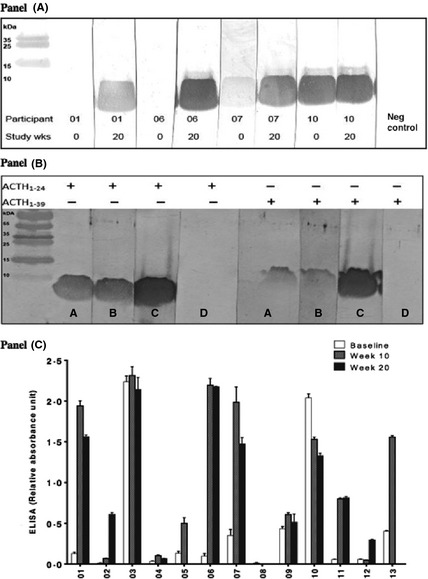Figure 1.

Antitetracosactide immunoreactivity detected with immunoblotting and ELISA. Panel A: Detection of serum binding activity to immunoblotted ACTH1–24, at baseline and week 20 for participants 1, 6, 7 and 10, as assessed by the band of approximately 4 kDa, the expected molecular weight of ACTH1–24. Sera from healthy subjects were used as a negative control. Panel B: Immunoblotting was performed with blots made using both tetracosactide (ACTH1–24) peptide and full‐length human ACTH1–39, both 2·5 μg per well. Representative positive sera from two participants (sera A and B), a monoclonal anti‐ACTH1–24 antibody (C) and serum from a healthy control (serum D) are shown. The monoclonal anti‐ACTH antibody recognizes bands of the same molecular mass as the positive participant sera for both ACTH1–24 and ACTH1–39 peptides, which was not seen with control sera. Panel C. Anti‐tetracosactide binding activity on immunoblotting from all the patients of RoSA study was quantified using ELISA. Results (±SEM) are expressed as arbitrary units of absorbance at 450 nm, having subtracted the background absorbance (mean of three wells without serum). A total of 11 females and two males (04 and 08) participated in this study. All except five patients had relative absorbance units of less than 0·21 at baseline. A positive control was run on each occasion to check for interassay variation, which was within 10% on successive plates.
